Lipscomb, WN. Ein neues Enzym. Nachrichten aus Chemie und Technik, v19, #7, p122 (1971). Draft reprinted here with permission from William Lipscomb. (Publication in German)
Spoof paper in the categories of enzyme humor, crystallography humor, crystal structure humor, and electron density map humor.
Spoof paper in the categories of enzyme humor, crystallography humor, crystal structure humor, and electron density map humor.
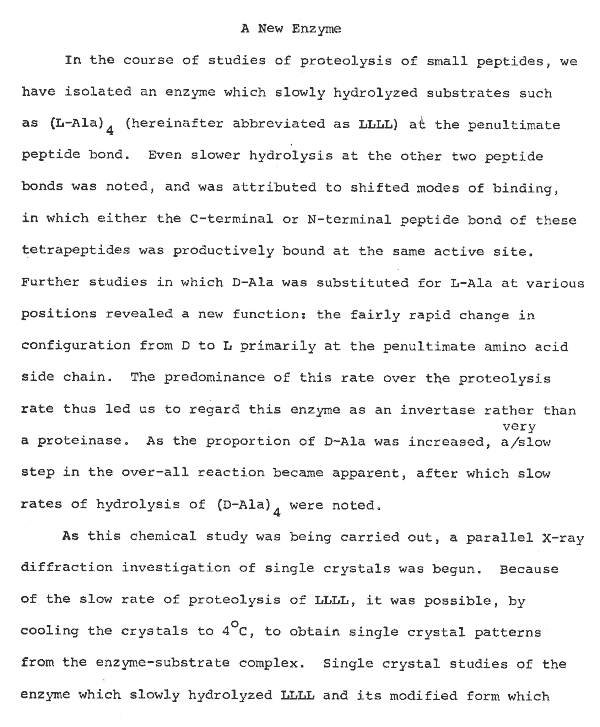
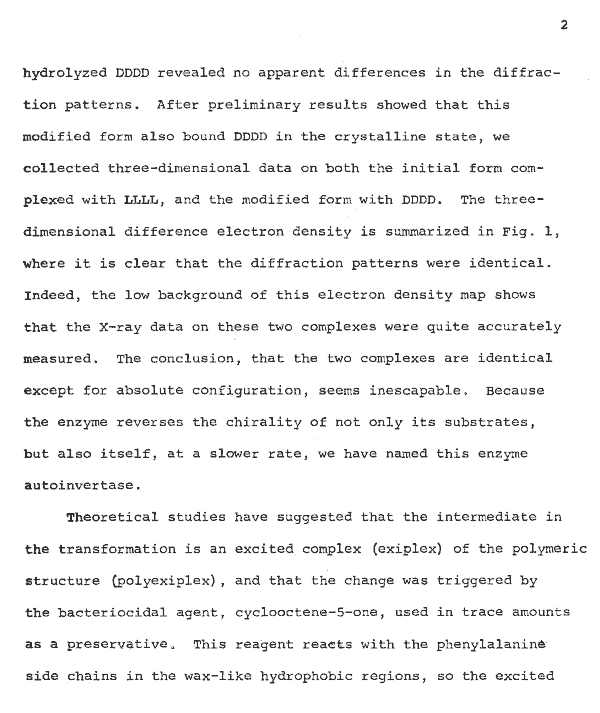
.
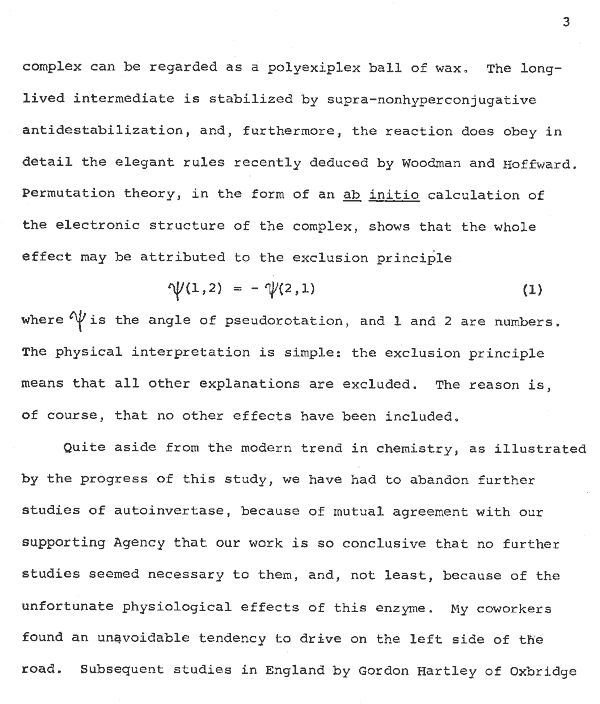
.
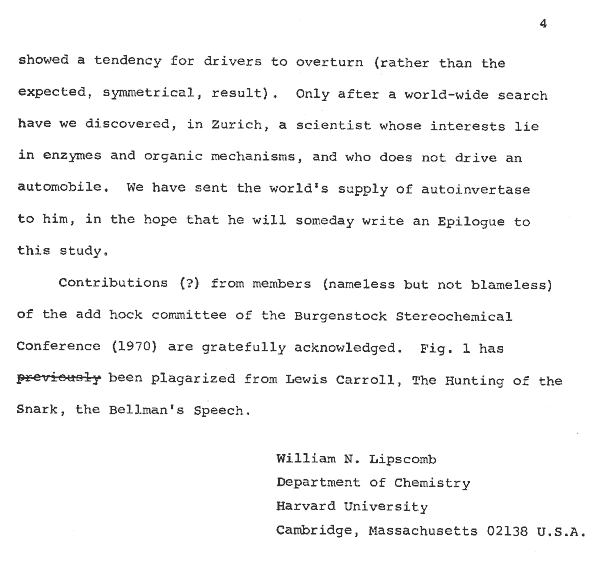
.
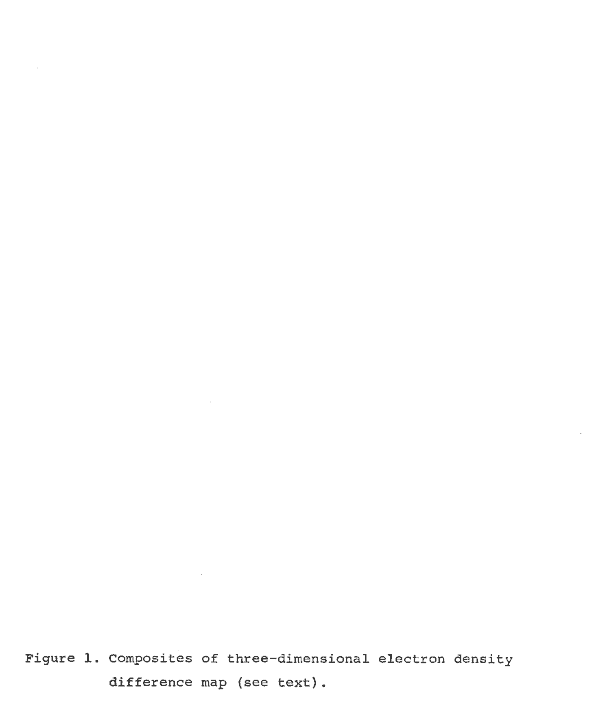
.
Image converted to text
A New Enzyme
In the course of studies of proteolysis of small peptides, we have isolated an enzyme which slowly hydrolyzed substrates such as (L-Ala)4 (hereinafter abbreviated as LLLL) at the penultimate peptide bond. Even slower hydrolysis at the other two peptide bonds was noted, and was attributed to shifted modes of binding, in which either the C-terminal or N-terminal peptide bond of these tetrapeptides was productively bound at the same active site. Further studies in which D-Ala was substituted for L-Ala at various positions revealed a new function: the fairly rapid change in configuration from D to L primarily at the penultimate amino acid side chain. The predominance of this rate over the proteolysis rate thus led us to regard this enzyme as an invertase rather than a proteinase. As the proportion of D-Ala was increased, a very slow step in the over-all reaction became apparent, after which slow rates of hydrolysis of (D-Ala)4 were noted.As this chemical study was being carried out, a parallel X-ray diffraction investigation of single crystals was begun. Because of the slow rate of proteolysis of LLLL, it was possible, by cooling the crystals to 4°C, to obtain single crystal patterns from the enzyme-substrate complex. Single crystal studies of the enzyme which slowly hydrolyzed LLLL and its modified form which hydrolyzed DDDD revealed no apparent differences in the diffraction patterns. After preliminary results showed that this modified form also bound DDDD in the crystalline state, we collected three-dimensional data on both the initial form complexed with LLLL, and the modified form with DDDD. The three-dimensional difference electron density is summarized in Fig, 1, where it is clear that the diffraction patterns were identical. Indeed, the low background of this electron density map shows that the X-ray data on these two complexes were quite accurately measured. The conclusion, that the two complexes are identical except for absolute configuration, seems inescapable. Because the enzyme reverses the chirality of not only its substrates, but also itself, at a slower rate, we have named this enzyme autoinvertase.
Theoretical studies have suggested that the intermediate in the transformation is an excited complex (exiplex) of the polymeric structure (polyexiplex), and that the change was triggered by the bacteriocidal agent, cyclooctene-5-one, used in trace amounts as a preservative. This reagent reacts with the phenylalanine side chains in the wax-like hydrophobic regions, so the excited complex can be regarded as a polyexiplex ball of wax. The long-lived intermediate is stabilized by supra-nonhyperconjugative antidestabilization, and, furthermore, the reaction does obey in detail the elegant rules recently deduced by Woodman and Hoffward. Permutation theory, in the form of an ab initio calculation of the electronic structure of the complex, shows that the whole effect may be attributed to the exclusion principle
psi(1,2) = -
psi(2,1)
(1)
where psi is the angle of pseudorotation, and 1 and 2 are numbers. The physical interpretation is simple: the exclusion principle means that all other explanations are excluded. The reason is, of course, that no other effects have been included.
Quite aside from the modern trend in chemistry, as illustrated by the progress of this study, we have had to abandon further studies of autoinvertase, because of mutual agreement with our supporting Agency that our work is so conclusive that no further studies seemed necessary to them, and, not least, because of the unfortunate physiological effects of this enzyme. My coworkers found an unavoidable tendency to drive on the left side of use road. Subsequent studies in England by Gordon Hartley of Oxbridge showed a tendency for drivers to overturn (rather than the expected, symmetrical, result). Only after a world-wide search have we discovered, in Zurich, a scientist whose interests lie in enzymes and organic mechanisms, and who does not drive an automobile. We have sent the world‘s supply of autoinvertase to him, in the hope that he will someday write an Epilogue to this study.
Contributions (?) from members (nameless but not blameless) of the add hook committee of the Burgenstock Stereochemical Conference (1970) are gratefully acknowledged. Fig. 1 has been plagiarized from Lewis Carroll, The Hunting of the Snark, the Bellman's Speech.
William N. Lipscomb
Department of Chemistry
Harvard University
Cambridge, Massachusetts 02138 U.S.A.
Figure 1. Composites of three-dimensional electron density difference map (see text).
This web page is published under the terms of the Creative Commons copyright below in the book, The Selected Papers of William N Lipscomb Jr.: A Legacy in Structure-Function Relationships.
Reprinted with permission from William Lipscomb.
-- Nov. 2009, last updated Oct. 2012.  Home page https://wlipscomb.tripod.com/
Home page https://wlipscomb.tripod.com/
 Home page https://wlipscomb.tripod.com/
Home page https://wlipscomb.tripod.com/
